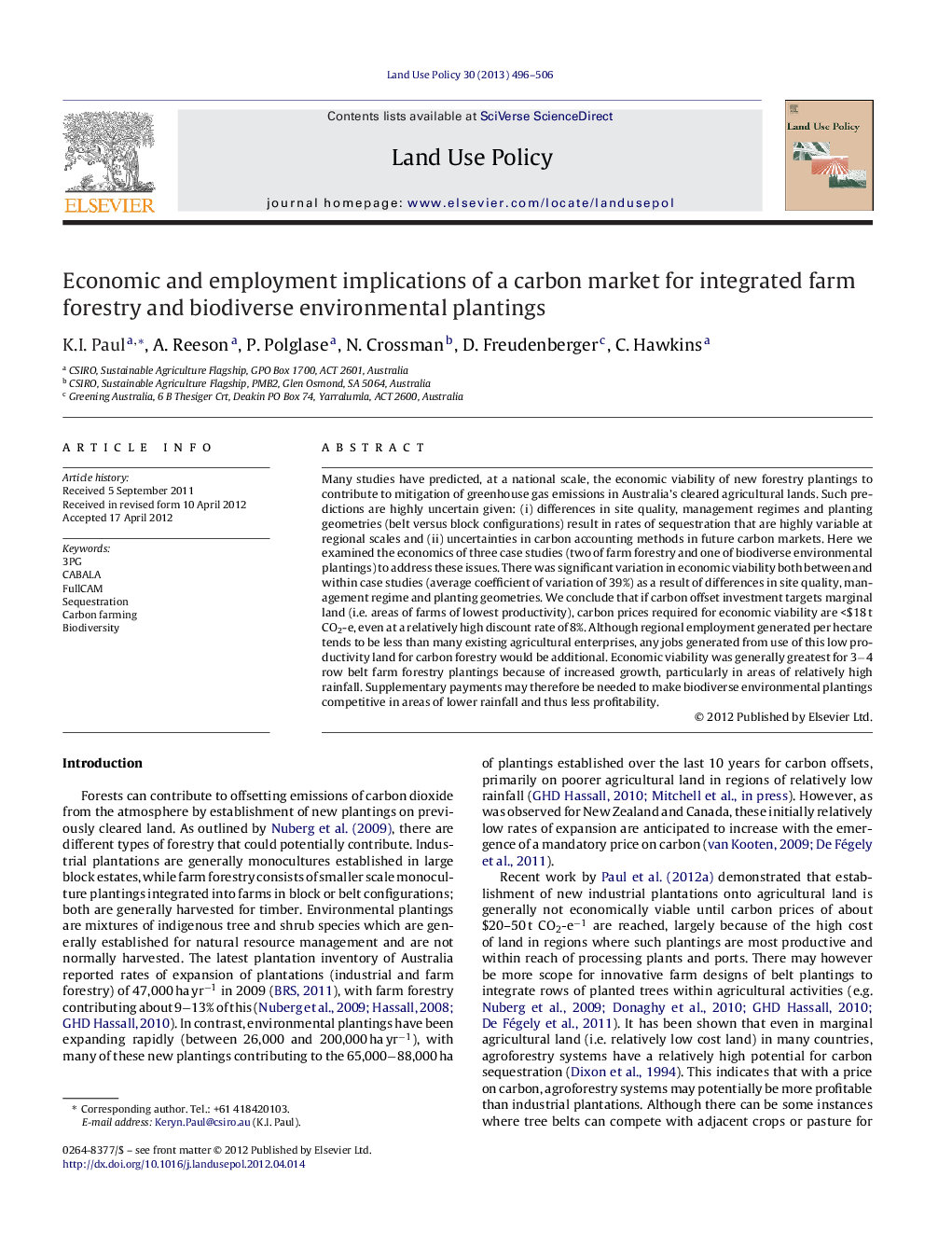| Article ID | Journal | Published Year | Pages | File Type |
|---|---|---|---|---|
| 93011 | Land Use Policy | 2013 | 11 Pages |
Many studies have predicted, at a national scale, the economic viability of new forestry plantings to contribute to mitigation of greenhouse gas emissions in Australia's cleared agricultural lands. Such predictions are highly uncertain given: (i) differences in site quality, management regimes and planting geometries (belt versus block configurations) result in rates of sequestration that are highly variable at regional scales and (ii) uncertainties in carbon accounting methods in future carbon markets. Here we examined the economics of three case studies (two of farm forestry and one of biodiverse environmental plantings) to address these issues. There was significant variation in economic viability both between and within case studies (average coefficient of variation of 39%) as a result of differences in site quality, management regime and planting geometries. We conclude that if carbon offset investment targets marginal land (i.e. areas of farms of lowest productivity), carbon prices required for economic viability are <$18 t CO2-e, even at a relatively high discount rate of 8%. Although regional employment generated per hectare tends to be less than many existing agricultural enterprises, any jobs generated from use of this low productivity land for carbon forestry would be additional. Economic viability was generally greatest for 3−4 row belt farm forestry plantings because of increased growth, particularly in areas of relatively high rainfall. Supplementary payments may therefore be needed to make biodiverse environmental plantings competitive in areas of lower rainfall and thus less profitability.
► Economics and employment implications of integrated farm forestry under carbon markets are assessed. ► Site quality, management and planting configuration contribute to a 83% variation in sequestration. ► If established on land of marginal productivity, prices of <$18 t CO2-e are required for economic viability. ► Regional jobs generated from use of this low productivity land would be additional. ► Farm forestry is more economically viable than environmental plantings when average rainfall is high. ► Supplementary payments may be needed to make biodiverse environmental plantings competitive.
